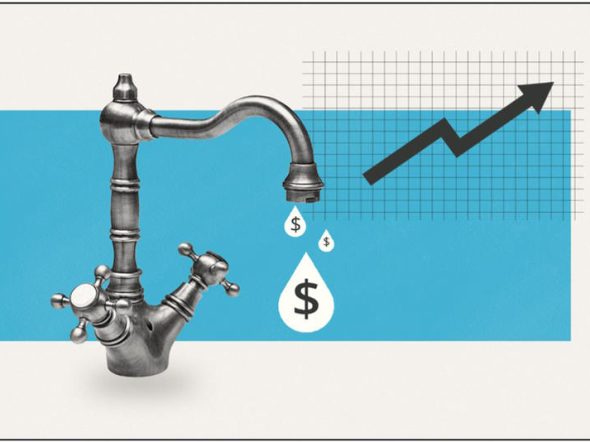Discover the best business water rates by comparing business water providers side-by-side. This can be done by making use of companies that discover and compare the best business water rates on your behalf. These companies research the best business water rates and then provide you with side-by-side comparisons to choose from.
Companies that create comparisons for business water rates can also manage your water and other utility services. If you were to make these comparisons by yourself and on your own time, it would take longer. The best option might be to let a comparison business manage your business water rates for you.
These companies also compare business energy rates, including electricity and gas. These are part of the comprehensive services utility providers offer to businesses around the UK. They give you the opportunity to choose from the best energy and water rates.
Benefits of Business Water Comparison
The comparison of your business water rate has several benefits for your business. By using a company that compares utility quotes, you can get a free water quote in just a few minutes, meaning that the work is already done for you. Your business can choose from deals with the latest market prices.
These deals provide your business with better fixed rates and include only the top business water suppliers in the UK. You are given expert advice and guidance, or, in other words, better customer service.
By comparing the prices of business water suppliers, you can see where your business can save money on its annual costs. Your new business water supplier could offer you a deal with less hassle and more efficient billing. Your water supplier might offer extra services, like water usage monitoring systems.
Understand your business water bill
Business water rates are calculated based on:
- A portable water metered rate.
- A portable water standing charge.
- A wastewater metered rate.
- A wastewater standing charge.
- A surface water drainage rate.
Your water bill will look different depending on if your business is metered or unmetered, or if you have different suppliers covering your business’ water and sewerage services. A water bill usually includes the following:
- Business information. like your business’ name and address.
- Invoice number or customer reference. When you make a payment, you reference these.
- Supply Point Identification Number (SPID) or Waste Supply Point Identification Number These unique numbers indicate where your supply point is.
- Summary of your account. includes a summary of charges, any bill adjustments, as well as any outstanding debt on your account.
- Summary of charges gives a top-level overview of the VAT and service charges your company pays during its billing period.
- Breakdown of charges includes a fixed service maintenance charge and, for metered customers, a volumetric charge based on your business’ water consumption. For unmetered customers, the volumetric charge is estimated using the rateable value.
How to switch business water suppliers
There are four easy steps to follow when changing your business’ water supplier.
Step 1: Calculate Your Water Consumption
Work out what your current use is. Your latest water bill will supply the information needed and also indicate how much you are currently spending on your monthly water services. Other important information is also provided on your water bill. This includes:
- Your yearly water consumption
- How much you are currently paying on your water bill.
- Details of the charges on your water bill
- Your Service Supply Identification Numbers (SPIDs)
- A recent water meter reading.
Step 2: Check Your Current Contract and Tariff
Check the information in your current contract as well as what your current tariff is. It details the charges for your wastewater services as well as how much you pay per cubic meter of water. This will help you decide if you want to change clean water suppliers, wastewater suppliers, or both.
Step 3: Pick a New Supplier
First, contact your old water supplier and see if they can offer you a better deal. If you are on a default or deemed tariff, the water supplier has to inform you if they have better deals. These offers will give you a good idea of the tariffs to which you can compare your water rates and what is on the market.
Do complete research on new water suppliers. Look at comparison sites, supplier websites, contacts for utility brokers, and business support services. If possible, test the water flow using water flow meters to check whether you need a new supplier. For a water and sewerage company to operate commercially and be legitimate, they have to have an Ofwat license.
Step 4: Agree on A Deal
If you have found a water supplier that meets all of your needs, contact them and give them your information. Your business’ eligibility will have to be confirmed. The necessary information about the tariff, terms, and conditions will be provided by them. If you are happy with all of the information and the tariff, you can confirm that you want to change to the new water supplier. You will then have to sign a letter of authority to secure the new contract.
A seven-day cooling off period will be provided to make completely sure that you want to change your water supplier. As soon as you have made the final switch, you will receive a final bill from your old supplier as well as start to get bills from your new water supplier.
Conclusion
For a comparison of the best business water rates, you have to look at different water suppliers. Finding a new supplier for your business has multiple benefits, and the switching process is easy to complete. Understanding how your business water bill is calculated is also an added advantage.
